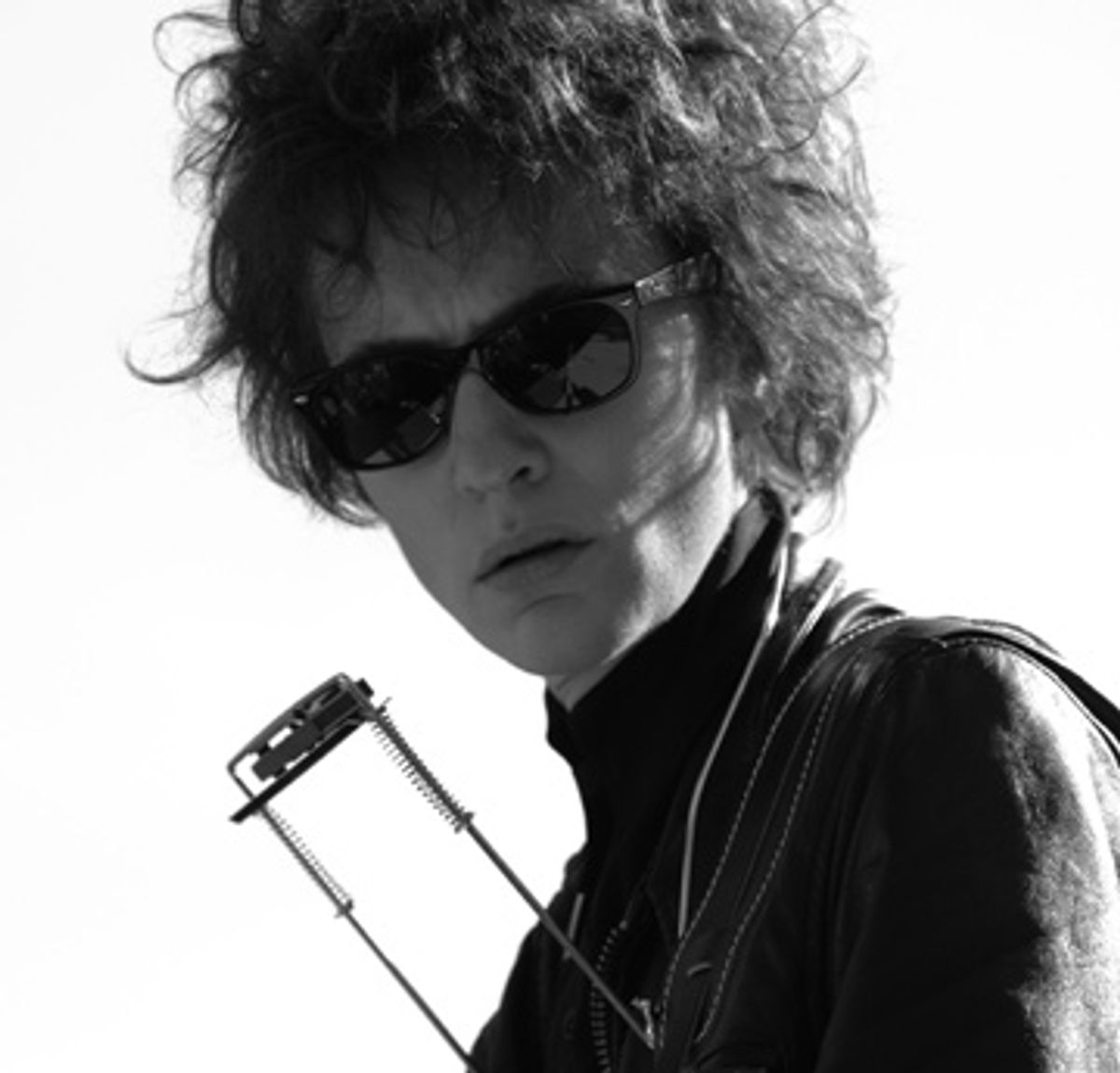The idea of Bob Dylan has become so outsize that the only way to deal with its big-as-the-sky analog sprawl is to break it into convenient digital modules. We do that, usually, by locating Dylan in a specific place and time, by speaking of "The Freewheelin' Bob Dylan" Dylan, or the "Blonde on Blonde" Dylan, or the "Nashville Skyline" Dylan, moving him around like a little pushpin on our map of the past.
Todd Haynes' "I'm Not There" does something different: In this ambitious and extraordinary dream-world meditation on the idea of Dylan, Haynes shows us Dylan's many faces by literally giving him many faces. We see him as an 11-year-old black kid who goes by the name Woody Guthrie, toting his battered guitar through the countryside; a sensitive, beloved troubadour with the power to motivate clean-cut young men and women in penny loafers and bobbed haircuts to change the world; an outlaw drifting through a semisurreal Western town; a blunt, boorish superstar who makes halfhearted attempts to be a family man; a skinny would-be savior in shades who has been anointed with holy oil and is repulsed by the way it feels on his skin.
This is a biopic of an idea, not of a man -- a title card at the beginning reads "Inspired by the music and many lives of Bob Dylan" -- and I'm still not sure how Haynes pulled it off. I only know that I can't wait to see it again. In fact, I'm afraid I'm going to be one of those freaks who see it half a dozen times before it drifts out of the theaters, not necessarily to parse its many allusions and inside jokes (although that's fun) but simply to bask in its crazy, warm glow.
There are infinitesimal ways to come at the myth we know as Dylan: We analyze him, draw and quarter him, reverently polish him like a Virgin Mary statue -- we'll do anything to fool ourselves into believing we own him. But part of what Haynes is doing here is celebrating Dylan's elusiveness (the movie's title says it all), his refusal to fit neatly into our unimaginative little boxes. Instead of genuflecting at the altar of Dylan, Haynes fills his movie with joy and pleasure. He takes delight in the way Dylan has always loved to tweak us, to make wicked little jokes, to turn familiar phrases inside out and show us how poetry is really just the underside of common speech. The movie, shot in both black-and-white and color, has so many different visual moods that it's hard to pin down its look; working once again with the great cinematographer Edward Lachman (who gave "Far From Heaven" such jaw-dropping, faux-Technicolor beauty), Haynes uses the landscape of the screen in imaginative ways: One minute he's showing the Beatles and Dylan cavorting in a London park like hepped-up Teletubbies; the next, he's cheekily quoting Godard. Half the fun of watching "I'm Not There" is keeping up with it, following its seductive twists and turns.
Haynes' multiple Dylans are played by actors including Christian Bale, Heath Ledger, Richard Gere and a wonderful young actor named Marcus Carl Franklin. But Cate Blanchett, as the Royal Albert Hall-era Dylan (there we go again with the pushpins), is the most hypnotic, capturing the spirit of Dylan -- or, more accurately, one of his many spirits -- in her willowy frame. This could be the performance of the year, in one of the most inventive and joyous movies of the year.
* * *
I arrived in Toronto Sept. 6. Six days and three incipient migraines later -- the downside to eating, drinking and sleeping movies for nearly a week -- I come away, as I did last year, with a sense that as much as we may think we've seen it all moviewise, there's always some unexpected fireball headed your way, something that touches you or confounds you or changes your way of thinking about the world. There were pictures I loved and didn't have a chance to write about, like Jacques Nolot's unsparing, funny and touching "Avant Que J'Oublie," and others I look forward to revisiting, and digging further into, in the near future, like Brian De Palma's thorny and unsettling "Redacted" and, of course, Haynes' "I'm Not There." Right now, at 2 a.m. in my last moments here, I'm feeling those bitter pangs of festival regret. I wish I could have seen more: Vincent Paronnaud and Marjane Satrapi's "Persepolis," Julian Schnabel's "Le Scaphandre et le Papillon," "George A. Romero's Diary of the Dead" -- the list goes on. But at least that leaves more to look forward to in the weeks and months ahead. For now, it's goodbye, Toronto -- but never goodbye to the promise of movies.



Shares